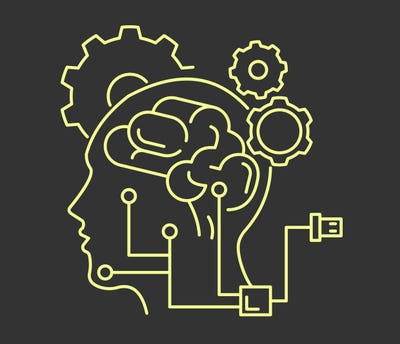AI: The digital with a difference
March 3, 2020

by James Buckley, Infosys Finacle
2 March 2020
A leading global market intelligence and advisory services firm predicts worldwide spending on Artificial Intelligence (AI) technologies to grow sharply from US$37.5 billion in 2019 to US$97.9 billion in 2023.
This money is expected to yield a fourfold benefit of about US$450 billion in cost savings over the next couple of years, according to another source.
Banks, along with the retail industry, top the list with projected investments of US$5 billion each (out of the total US$37.5 billion) this year. While the banking industry has always spent big on technology, it is doing things a bit differently when it comes to AI.
One striking difference is that banks are looking to hire AI specialists from outside and build their own capabilities, rather than buying a ready solution like they are doing in the case of cloud or mobility. Goldman Sachs, for example, has hired Amazon’s Charles Elkan to spearhead its AI strategy; JP Morgan has brought Carnegie Mellon University professor, Manuela Veloso on board as head of AI research. The reasons are many and compelling – AI expertise is still very limited; currently available solutions are not standardized; and the technology is so vast and versatile that no two banks want to use it the same way.
The second difference is that banks are deploying the different technologies under the AI umbrella enterprise-wide, in the front, middle and back office. Contrast this with mobility, used mainly in customer experience, or cloud, in infrastructure provisioning. Stuart Russell, in his 2003 book entitled “Artificial Intelligence: A Modern Approach”, argues that AI is superior to any other technology because it alone is capable of sensing, comprehending, acting and learning. Because AI can sense what is happening, comprehend the event, take informed action in real-time and learn throughout this cycle, it finds unlimited use cases in banking.
The chatbot is the most-adopted AI use case in banks; 39 of the world’s 100 largest banks have it. Figuring right at the top of the peak of inflated expectations in the Gartner Hype Cycle for Artificial Intelligence, 2019, the chatbot has promised more than it has delivered. For instance, it is not quite clear how it has helped customer service in the three to five years it has been around. That being said, the chatbot is here to stay and maybe this is the year that it will start to prove its potential.
In the front office, AI is visible in customer service (chatbot) and sales (making next-best recommendations, for example); in the middle office, machine/deep learning is helping to detect and prevent fraud; in the back office, AI is finding application in identity management, risk mitigation, credit scoring, collections management, etc.
Especially powerful is AI’s ability to leverage big data and analytics. Banks are sitting on an enormous pile of highly underutilized data from the last fifty to sixty years. In contrast, their digital-born challengers are putting their (much smaller) data to full use across a spectrum of functions to improve efficiency, experience and engagement.
As data continues to explode – from 4.4 zettabytes in 2013 to 44 zettabytes in 2020 – the incumbents’ analytical disadvantage versus their new competitors will grow, perhaps to a point of no return, unless they find a solution. That solution may be found in AI technologies, such as machine learning and advanced analytics that are capable of handling the volume, variety (structured/unstructured, text/voice/video etc.) and velocity (sporadic, real-time) of big data and turning it into unprecedented value for the banks and their customers.
The third difference of AI is that because it is everywhere, it can help scale digital transformation throughout the bank:
When bank employees from a previous generation serve digital-native customers, the “digital gap” between them can sometimes create discord. Besides training staff in the use of digital, banks can employ various AI technologies to process customer data into insight at scale, to help employees understand customers better.
Today, banks are in the midst of a number of important shifts – for example, from pipeline to platform (model) or from (efficiency) engine to experience. AI technologies are enabling these organizational shifts at scale by automating processes, managing human interactions, providing deep insights and triggering next best actions.
In the latest EFMA Infosys Innovation in Retail Banking survey, 70 percent of banks said that even today, legacy technology and a lack of agility were their biggest barriers to transformation. A bank cannot run on legacy systems and processes and still hope to achieve digital at scale; a technology landscape along the lines of cloud-native, mobile-first, open banking systems, is a must. And once again, it is AI that can make it happen by calculating how much cloud capacity is needed and provisioning it automatically; by determining the best way to deliver mobile services; and by identifying opportunities for robotic process automation.
The digital revolution has yielded several indispensable technologies such as mobility, Internet of Things and blockchain. But none can match the ability of AI to be everywhere, and do everything, in the bank.
James Buckley is European head of Finacle, a core banking platform being developed by EdgeVerve Systems, a subsidiary of Infosys
About the Author(s)
You May Also Like


.jpg?width=700&auto=webp&quality=80&disable=upscale)
.jpg?width=700&auto=webp&quality=80&disable=upscale)
.jpg?width=700&auto=webp&quality=80&disable=upscale)



.jpg?width=300&auto=webp&quality=80&disable=upscale)
.jpg?width=300&auto=webp&quality=80&disable=upscale)